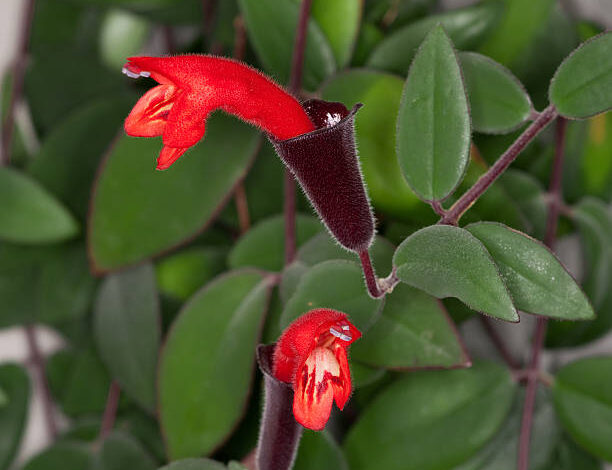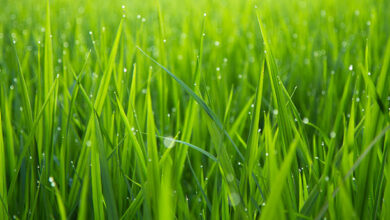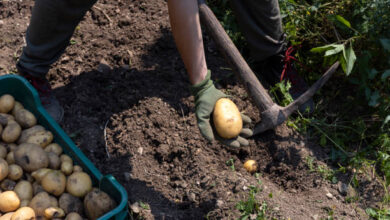
Lipstick Plants: Characteristics, Benefits, and Care Tips
The lipstick plants, known for its vibrant red tubular flowers and glossy green leaves, is a stunning addition to any indoor garden. Whether you’re a novice gardener or an experienced plant enthusiast, this guide will help you understand everything you need to know about this unique plant, including its characteristics, benefits, planting tips, and essential care instructions.
Overview of the Lipstick Plant
- What is a Lipstick Plant?
The lipstick plant, scientifically known as Aeschynanthus radicans, is a tropical plant native to Southeast Asia. It gets its name from the bright red flowers that resemble a tube of lipstick. The plant is admired for its trailing growth habit, making it ideal for hanging baskets and shelves where its cascading vines can be displayed to their full potential.
- Physical Characteristics
The lipstick plant is characterized by its vibrant red tubular flowers, which emerge from darker-colored buds, and its glossy, dark green leaves. The flowers are typically 1-2 inches long and bloom intermittently throughout the year, adding a splash of color to your indoor space.
- Growth Habit
The plant’s trailing nature makes it perfect for hanging baskets, shelves, and other elevated spots where it can drape gracefully. It can grow up to 2-3 feet long, with vines that can be easily trained to grow in various directions to suit your decorative needs.
Types of Lipstick Plants
- Popular Varieties of Lipstick Plants
- Aeschynanthus radicans: The most common variety, known for its striking red flowers and trailing growth habit.
- Aeschynanthus lobbianus: Features slightly larger flowers and more robust foliage, making it a popular choice among gardeners.
- Aeschynanthus pulcher: Noted for its bright orange-red blooms and compact growth, this variety is perfect for smaller spaces.
Benefits of Lipstick Plants
Why Choose a Lipstick Plant for Your Home?
- Aesthetic Appeal
Lipstick plants are prized for their aesthetic appeal. The vibrant red flowers and lush green foliage add a touch of elegance and color to any indoor space. They can be used to create beautiful hanging displays or as a centerpiece on shelves and tables.
- Air Purification
Like many houseplants, lipstick plants help purify the air by removing toxins and improving indoor air quality. This makes them not only a beautiful addition but also a healthy one for your living space.
- Low Maintenance
Lipstick plants are relatively easy to care for, making them suitable for both novice and experienced gardeners. They require minimal maintenance and can thrive with the right care, providing long-lasting beauty in your home.
YOU MAY LOVE TO READ
Crape Myrtle Bushes: Planting, Care, and Benefits
Love Roses: Varieties, Benefits, and Care Tips
What Are the 7 Parts of a Plant and Their Functions?
Planting Lipstick Plants
How to Plant and Propagate Lipstick Plants
- Choosing the Right Container
Select a container that accommodates the trailing nature of the lipstick plant. Hanging baskets or pots placed on high shelves are ideal. Ensure the container has good drainage to prevent waterlogging, which can cause root rot.
- Soil Requirements
Lipstick plants thrive in well-draining potting soil. A mix designed for epiphytic plants or a standard potting mix with added perlite or orchid bark works well. The soil should retain moisture without becoming waterlogged.
- Propagation Methods
Lipstick plants can be easily propagated from stem cuttings. Take a cutting with at least two nodes, remove the lower leaves, and place it in water or moist soil until roots develop. Once rooted, the cutting can be transferred to a pot with well-draining soil.
Caring for Lipstick Plants
Essential Care Tips for Thriving Lipstick Plants
- Lighting
Lipstick plants thrive in bright, indirect light. They can tolerate some direct morning sun but should be protected from intense afternoon sunlight, which can scorch the leaves. Place them near a north or east-facing window for the best results.
- Watering
Proper watering is crucial for the health of your lipstick plant. Water thoroughly when the top inch of soil feels dry, ensuring the water drains out completely. Avoid letting the plant sit in water to prevent root rot. In winter, reduce watering frequency as the plant’s growth slows down.
- Humidity and Temperature
Lipstick plants prefer high humidity and warm temperatures. Maintain a humidity level of 50-60% and keep the plant in a spot where the temperature stays between 65-80°F (18-27°C). If your home is dry, use a humidifier or place a tray of water near the plant to increase humidity.
- Fertilization
Feed your lipstick plant with a balanced, water-soluble fertilizer every 4-6 weeks during the growing season (spring and summer). Dilute the fertilizer to half the recommended strength to avoid over-fertilizing, which can damage the plant.
Troubleshooting Common Issues
Addressing Problems with Lipstick Plants
- Leaf Drop
Leaf drop can be caused by a sudden change in environment, overwatering, or underwatering. Ensure consistent care and check the plant’s soil moisture regularly. Avoid placing the plant in drafty areas or near heat sources.
- Yellowing Leaves
Yellowing leaves may indicate overwatering, underwatering, or nutrient deficiencies. Adjust your watering schedule and ensure the plant receives balanced fertilization. Check for root rot and repot if necessary.
- Pest Infestations
Common pests such as aphids, spider mites, and mealybugs can affect lipstick plants. Inspect the plant regularly and treat infestations promptly with insecticidal soap or neem oil. Maintaining high humidity can also help deter pests.
Conclusion
The lipstick plant is a vibrant and low-maintenance addition to any indoor garden. With its stunning red flowers and lush green foliage, it adds a touch of elegance and color to your home. By understanding its characteristics and following the essential care tips provided, you can enjoy a thriving lipstick plant year-round.
Enhance your indoor garden with a lipstick plant today and follow our expert tips to keep it thriving.




